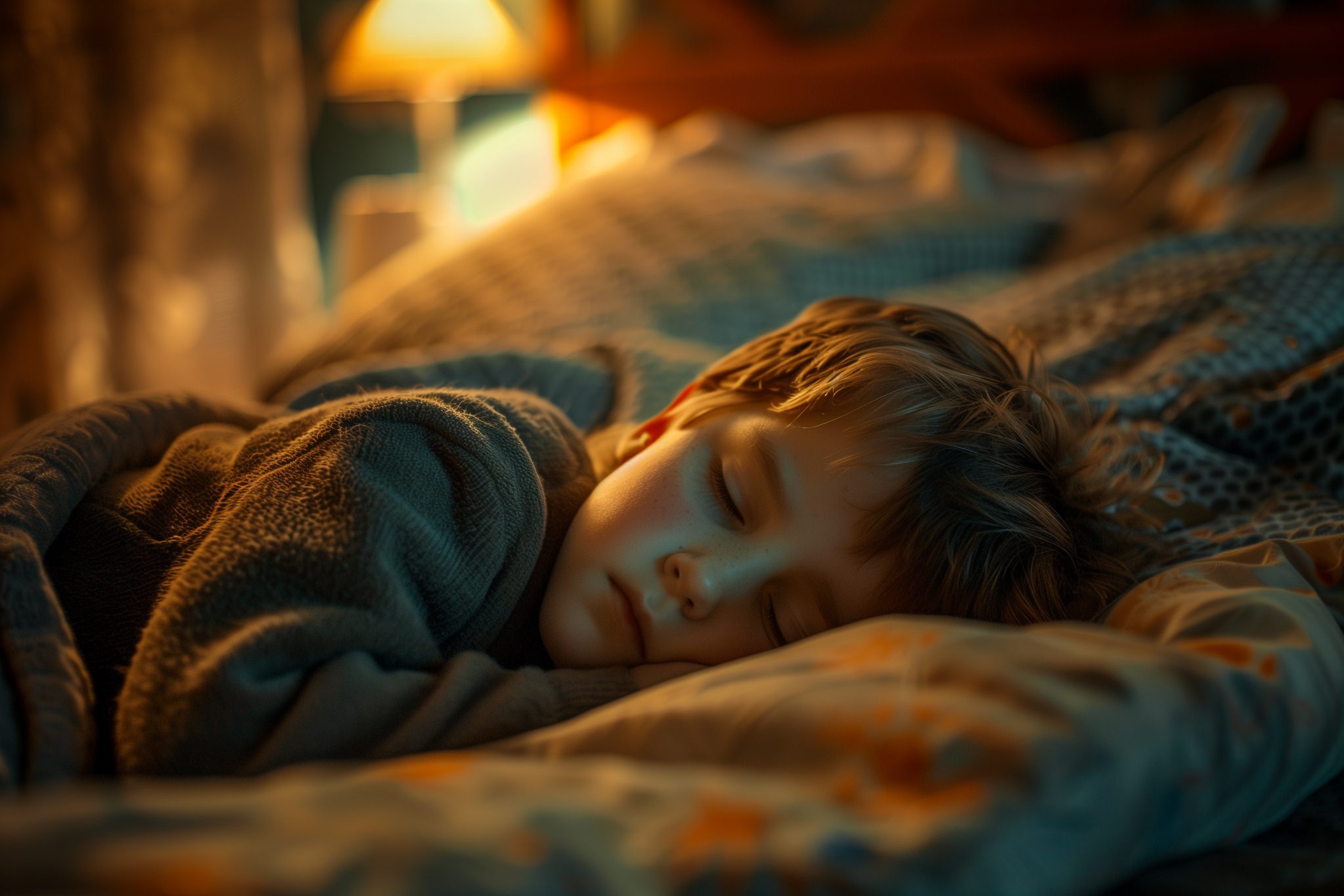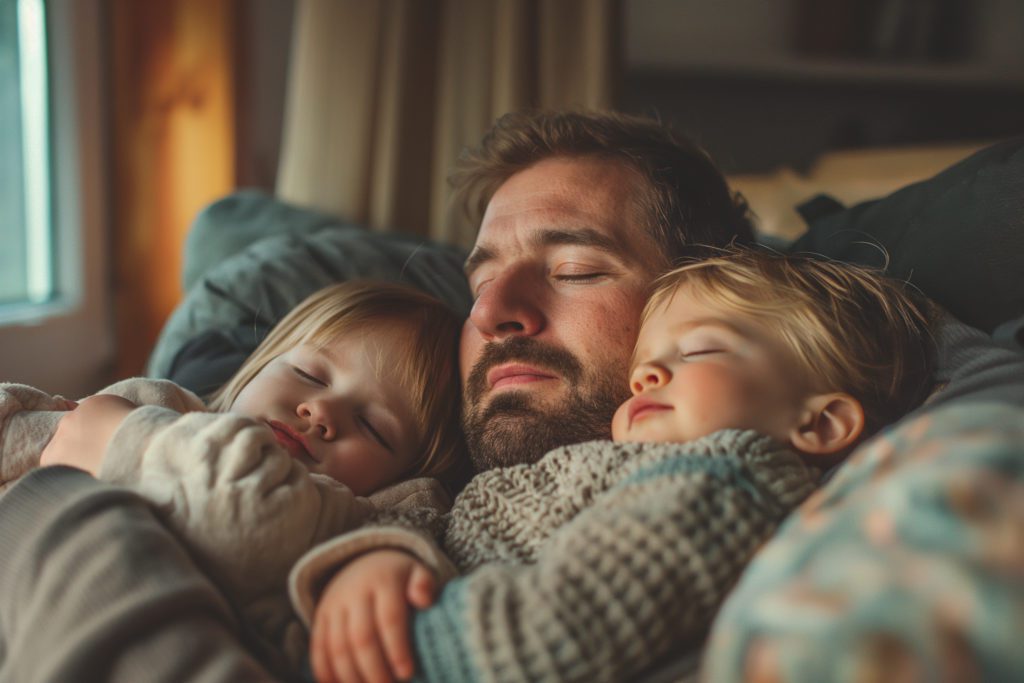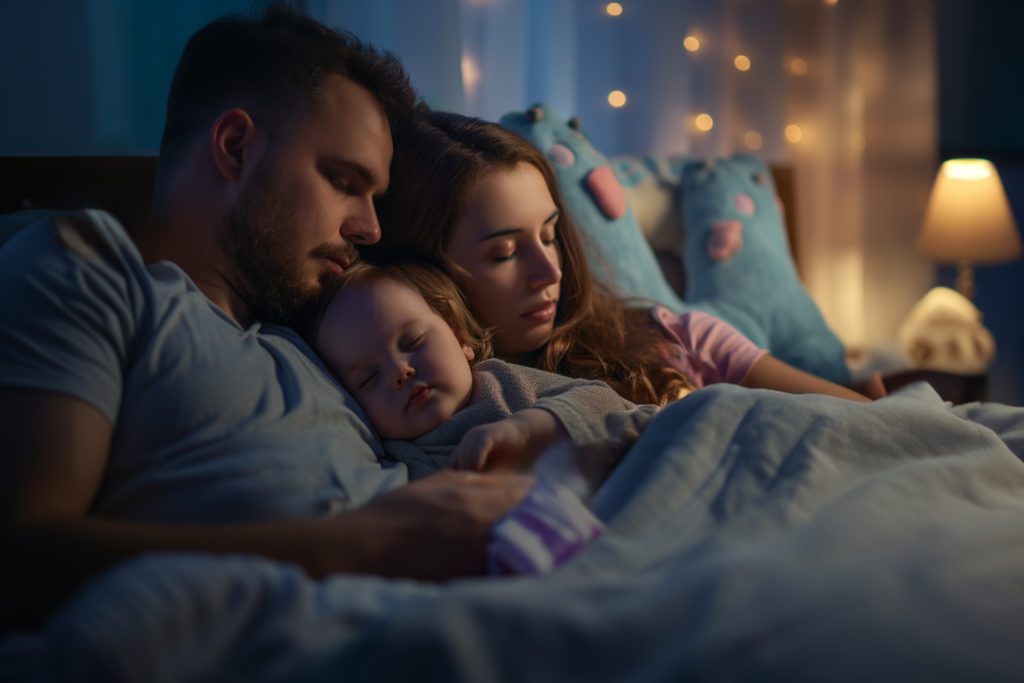
How Often Should I Check My Child’s Fever at Night?
Worried about your child's fever at night? Discover how often to check their temperature during sleep without compromising much-needed rest.

A quick guide to help you navigate nighttime fever fears
It's 2 a.m., and here you are, thermometer in hand, trying to figure out if it's time to check your child's temperature yet again. If you're like many parents, you're probably wondering how often you need to disrupt their sleep—and yours—to make sure their fever isn't climbing too high. Balancing their need for rest with your need to keep them safe can feel like walking a tightrope.
"How often should I check my child’s fever at night?" is a burning question that keeps many parents up at night. This guide is here to help ease those worries with some straightforward advice on managing fever checks effectively. We'll help you figure out a plan that lets everyone get as much sleep as possible, so you can both wake up feeling better.
What is pediatric fever?
Pediatric fever is usually medically defined as a body temperature above 100.4°F (38°C) in children. Often a signal that something is “off” in the body, this common symptom often stirs concern among parents because it's one of the first indications that their child might be battling an infection.
Fevers are typically a natural and healthy response to a variety of conditions, most commonly infections like the flu or a cold. This increase in body temperature is actually part of the body's defense mechanism, designed to make the body less hospitable to invading bacteria and viruses. While a fever itself is usually harmless, it's the underlying cause that needs attention and, in some cases, medical intervention.
Despite the protective role of fever, monitoring is essential, especially in children. High fevers or fevers lasting more than a few days might require medical evaluation to rule out more serious infections or illnesses. Understanding what constitutes a normal fever and recognizing the signs that warrant a doctor's visit are key steps in effectively managing your child's health and well-being.
How often should I check my child’s fever at night?
One of the most pressing concerns for parents is determining how often to check their child's fever during the night. Experts generally recommend checking the fever if you notice changes in your child's condition or if they seem very uncomfortable. However, if the child is sleeping peacefully, it might be best to let them rest, as sleep is one of the most important factors for recovery.
Here are some tips to help you balance fever checks with much-needed rest:
- Before bedtime: Ensure you check the fever and administer any recommended medications. This can help manage the fever throughout the night.
- Set 4-hour timers: Instead of waking up hourly, consider checking every four hours if your child's fever is relatively stable but still a concern. If the fever is high (over 104°F), more frequent checks might be necessary, depending on your healthcare provider's advice.
- Use a reliable thermometer: Invest in a good quality digital thermometer to quickly and accurately check your child’s temperature with minimal disturbance.
- Keep everything handy: Have a thermometer, a glass of water, and any necessary medication nearby. This reduces the time you’re awake and the disturbance to your child.
- Listen to your child: Often, children will wake up if they feel excessively uncomfortable. If your child wakes up due to discomfort from the fever, use this opportunity to check their temperature and comfort them.
Ultimately, each child and situation is different, so it’s important to use your judgment and consult with your pediatrician to develop a plan that works best for your child's needs and your own peace of mind.
The impact of fever on sleep
Fever can significantly disrupt a child's sleep patterns, primarily because the body's normal sleep cycle is closely linked to body temperature rhythms. A higher body temperature can interfere with falling asleep and staying asleep, making rest less restorative. Managing a child's fever effectively is therefore incredibly important for promoting better sleep, which in turn supports healing and recovery.
During a fever, the body's thermostat is set higher than usual, which can cause discomfort, shivering, and sweating—all symptoms that can wake a child from sleep. Additionally, the immune response triggered by an infection, which often causes fever, can increase metabolic rates and alter hormone levels, further affecting sleep quality.
When your child has a fever, it's natural to feel concerned, but most fevers can be managed at home. However, certain symptoms accompanying a fever require immediate medical attention to ensure your child's safety and well-being. Here are key symptoms to watch for:
- A temperature of 100.4°F (38°C) or higher in babies 2 months or younger.
- A temperature of 101°F (38.3°C) or more in babies 3 to 6 months, or a temperature of 102°F (38.9°C) or higher in children over 6 months that lasts more than two days.
- Symptoms such as shaking arms and legs, trouble breathing, and rolling back of the eyes. Immediate care is paramount, especially if the seizure lasts more than 10 minutes or recurs.
- Trouble waking up your child or significant lethargy.
- A fever of at least 100.4°F for more than 24 hours in children under 2, or for more than 72 hours in children over 2 years old.
These symptoms can indicate serious underlying conditions and should not be ignored. If your child exhibits any of these signs, seek medical attention immediately. Always remember that it's okay to contact your pediatrician with any concerns about your child's fever—no matter the temperature or duration. Professional advice can provide reassurance and ensure that your child receives the appropriate care.
Practical care strategies for managing fever and promoting sleep
When your child has a fever at night, comforting them effectively can help them—and you—get better rest. Here are some practical strategies to manage their fever and promote soothing sleep:
Follow medication guidelines
Always consult your pediatrician before administering any medication. Common antipyretics like acetaminophen or ibuprofen can be effective in reducing fever and discomfort, but they must be used according to age-specific dosages and guidelines. Never give aspirin to children due to the risk of Reye’s syndrome.
Keep your child hydrated
Fever can lead to dehydration, especially if your child is sweating. Offer plenty of fluids throughout the day and night. Stick to water, electrolyte solutions, or clear broths.
Keep the room cool (around 65-70°F) and well-ventilated
A cooler environment can help reduce body temperature naturally. While it’s important to keep your child adequately warm, avoid heavy blankets or too much clothing, which can raise body temperature further. Dress your child in lightweight, breathable clothing and use a light sheet or blanket.
Create a calming wind-down routine
Gentle soothing can help comfort your child in the quest of a restorative night’s sleep. A warm bath before bedtime can sometimes help lower a fever and relax your child. Quiet activities like reading a book together can also be soothing and distract them from discomfort.
Mastering nighttime care for a feverish child
Navigating nights with a feverish child can be challenging—and above all, concerning—but the right strategies can ease symptoms and promote restful sleep for your little one. Always monitor their condition, maintain a comfortable environment, and don’t hesitate to consult a medical professional with any concerns. Trusting your instincts and applying these caregiving techniques can make a big difference in your child’s recovery and comfort.

Written by
Georgia Austin
Professionally trained copywriter, editor, and content marketing strategist with over 7 years of experience—working with brands like Nike, Siemens, Toshiba, Tommy Hilfiger, Culture Trip, and Klook.
Download Pillow
Get help
Press & News
Legal
Connect
X (Twitter)
Company
Copyright © Neybox Digital Ltd.



